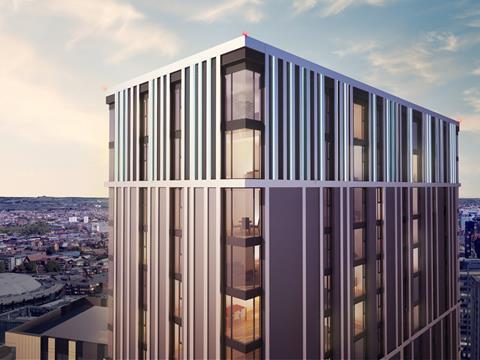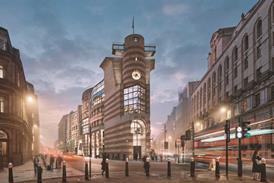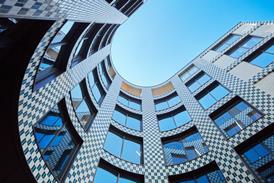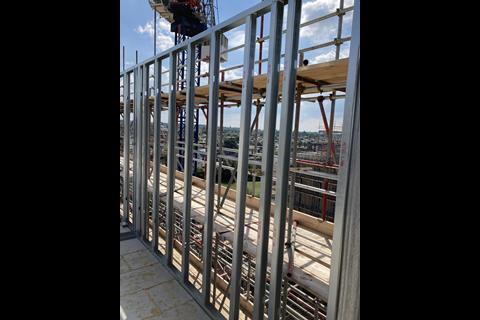As sustainability pressures mount on the construction industry, steel emerges as a surprising ally in reducing embodied carbon, offering innovative solutions for greener buildings

As with most other sectors of the economy, the construction industry is coming under increasing pressure to become more sustainable and to minimise the carbon emissions and environmental impact of projects.
Together with environmental initiatives, such as the London Plan 2021, which requires medium- and large-scale construction projects in London to have an Environmental Product Declaration (EPD) and carbon footprint statements as part of the planning application, central government and local authority policies place increased pressure on architects, developers and clients to design and construct buildings using sustainable materials and methods.
Material challenges
The major building materials used today, and likely to be used for centuries to come, all have some impact on the carbon content of a building project. This is true of concrete, bricks, steel, plastics and timber.
The carbon content can be from a variety of sources; the natural material’s carbon content, extraction, conversion and production processes and all the supporting functions, from sales and administration to storage and transportation.
There is also the question of whether this carbon remains embodied within the material after the life of the building, such as when metals are recovered, recycled and/or repurposed, or whether the carbon is released into the environment; for example, where timber cannot be re-used and is often burned.
Sustainability of steel
Steel’s sustainability credentials make a compelling case for its use in construction, with light gauge steel framing systems, such as Metsec SFS and Metframe, delivering additional benefits. These include:
- Steel is easily recoverable and is 100% recyclable - SFS has a reuse and recovery rate of 85%, compared to just 13% for timber
- Reduction in a structure’s embodied carbon by using less steel
- Accurate design and manufacturing processes result in virtually zero waste
- SFS is a lighter material, reducing the environmental impact of transportation
Steel manufacture is one of the largest global contributors to carbon dioxide emissions, but European steel manufacturers are making great strides to move away from fossil-fuelled processing by using less carbon-intensive electric arc furnaces which are powered by renewable energy to create a reduced carbon steel, such as Metsec Decarb.
Available for Metsec SFS, Metframe, internal non-loadbearing dry lining studs and purlins, Metsec Decarb is a true move towards a reduced carbon future for the construction industry, containing less than half the amount of carbon dioxide per tonne for the same quality of steel (accurate in July 2024).
Andy Hackett, General Manager of voestalpine Metsec’s Dry Lining Division, states, “Metsec Decarb underlines our commitment to providing specifiers, developers and clients with a very real opportunity to reduce a project’s carbon footprint and enhance its sustainability credentials.
“Metsec Decarb is a bona fide lower embodied carbon steel. It does not rely on greenwashing, carbon offsetting, allocation of green energy or mass balance approach to achieve this, providing real peace of mind for the designer.”
The reductions in CO2 achievable with Metsec Decarb can be balanced against the 30-year London Plan offset charges or to help achieve other, ever-increasing sustainability targets.
Steel manufacture is one of the largest global contributors to carbon dioxide emissions, but European steel manufacturers are making great strides to move away from fossil-fuelled processing
Net Zero Carbon operations
There seems little point in a building materials/systems manufacturer offering a reduced carbon product if the same manufacturer is not committed to reducing the carbon dioxide emissions of its own operations.
Net Zero Carbon forms part of the government’s procurement policy, with the Cabinet Office’s Action Note PPN06/21 stipulating how government departments need to take account of suppliers’ Net Zero Carbon Reduction Plans when procuring for major government contracts.
Andy Hackett continues, “Manufacturers and suppliers need to look at ways in which they can reduce their carbon emissions; as part of voestalpine AG, voestalpine Metsec remains committed to achieving net zero carbon emissions by 2035.
“Achieving this industry-leading target requires a focused effort throughout our company. This includes investigating areas where we can save energy and optimise processes as well as exploring ways to source green electricity, and even generate our own renewable energy.”
A carbon guarantee
As with most things in life, achieving a desired result, for example constructing a net zero carbon building, will rely on striking a balance between the ideal and the achievable.
Faced with a design brief to minimise a building’s carbon footprint, steel might not be the first building material which comes to an architect’s mind. But on closer inspection, steel, and reduced carbon steel in particular, offers a viable solution.
Specifiers can take added assurance of product/system credentials from verified manufacturer statements and EPDs which can be included in the final project’s carbon assessments.





















